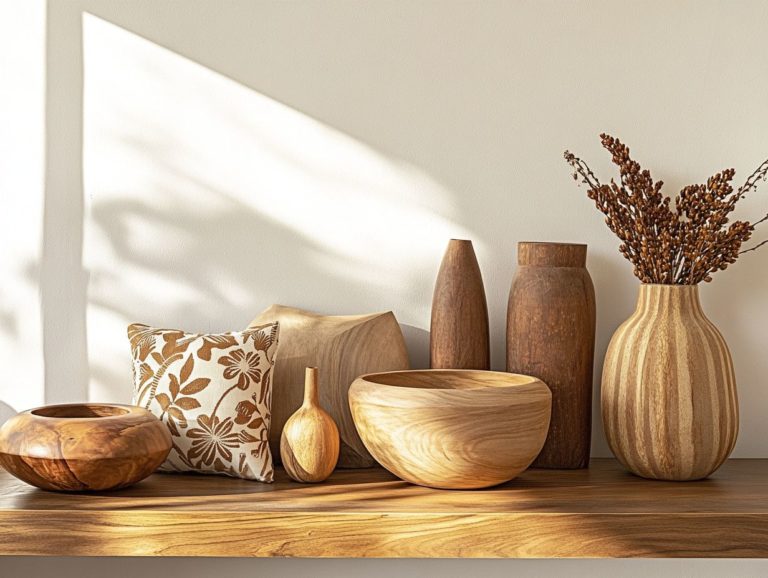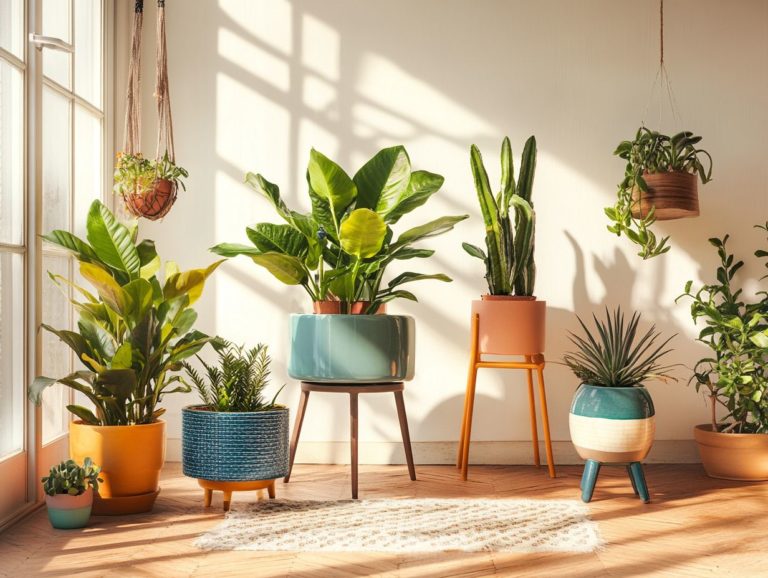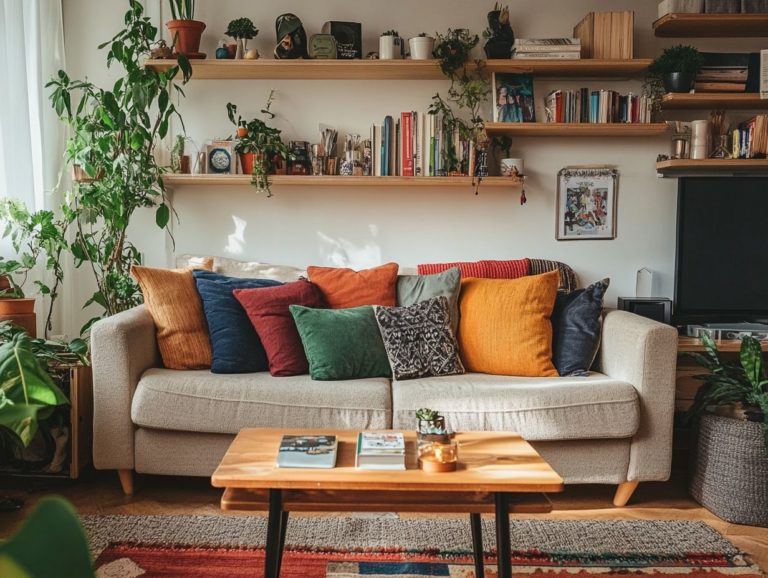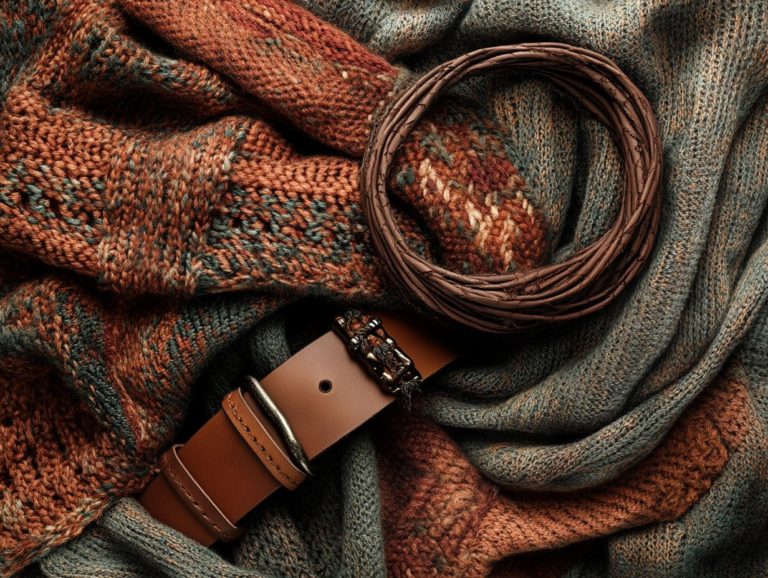How to Incorporate Cultural Elements in Accessories?
Accessories transcend mere decoration; they often embody rich cultural significance and a storied history.
This exploration delves into the essential role that cultural elements play in accessories. It illuminates their importance by showing how to seamlessly incorporate these elements into your style while honoring their origins.
We elucidate the delicate distinction between cultural appropriation and appreciation. Our guidance will help you wear cultural accessories with authenticity. Embark on this journey with us as we celebrate the vibrant tapestry of culture woven into fashion!
Contents
- Key Takeaways:
- The Role of Culture in Accessories
- Ways to Incorporate Cultural Elements in Accessories
- Traditional vs. Modern Cultural Accessories
- Cultural Appropriation vs. Appreciation in Accessories
- Tips for Creating and Wearing Cultural Accessories
- Frequently Asked Questions
- What are some ways to incorporate cultural elements in accessories?
- Why is it important to incorporate cultural elements in accessories?
- How can I research different cultures for my accessories?
- What are some examples of cultural elements in accessories?
- Can I mix and match cultural elements in my accessories?
- How can I respect cultures while incorporating their elements in my accessories?
Key Takeaways:

- Cultural elements in accessories add depth, meaning, and beauty to personal style.
- Drawing inspiration from diverse cultures can lead to unique and meaningful accessory designs.
- Respectful and authentic representation of cultural elements in accessories is key to promoting cultural appreciation.
The Role of Culture in Accessories
Culture plays a crucial role in accessories. It intertwines identity, tradition, and aesthetics in a way that reflects businesses that celebrate culture driving the fashion industry.
By weaving cultural elements into your designs, you can create unique accessories that resonate with consumer preferences. This fosters an understanding of the variety in fashion.
Committing to ethical and sustainable practices elevates the cultural significance of your products. This ensures they honor traditional techniques while appealing to a modern market that values authenticity and craftsmanship.
This connection enriches your selling strategies, both online and offline. It targets audiences eager for meaningful cultural expression in their accessories.
Why Cultural Elements are Important in Accessories
Cultural elements are essential in accessories. They embody the heritage and identity of various communities, enriching the fashion industry’s diversity and allure.
Take, for example, the artisans in Morocco. They masterfully create leather goods adorned with intricate designs and techniques passed down through generations.
By incorporating traditional motifs into modern accessories, these artisans preserve their cultural heritage. They also champion ethical and sustainable practices by using locally sourced materials and fair labor.
This harmonious blend of artistry and responsibility tells a captivating story! It enhances the narrative behind each piece, transforming it from a mere fashion item into a meaningful connection to culture and sustainability.
Ways to Incorporate Cultural Elements in Accessories
Incorporating cultural elements into your accessories can be accomplished through various thoughtful methods, including using accessories to reflect personality.
Consider utilizing traditional techniques and collaborating with local artisans to craft unique pieces that resonate with a specific cultural niche. This approach not only enriches your collection but also honors the heritage and craftsmanship behind each accessory.
Inspiration and Ideas for Cultural Accessories
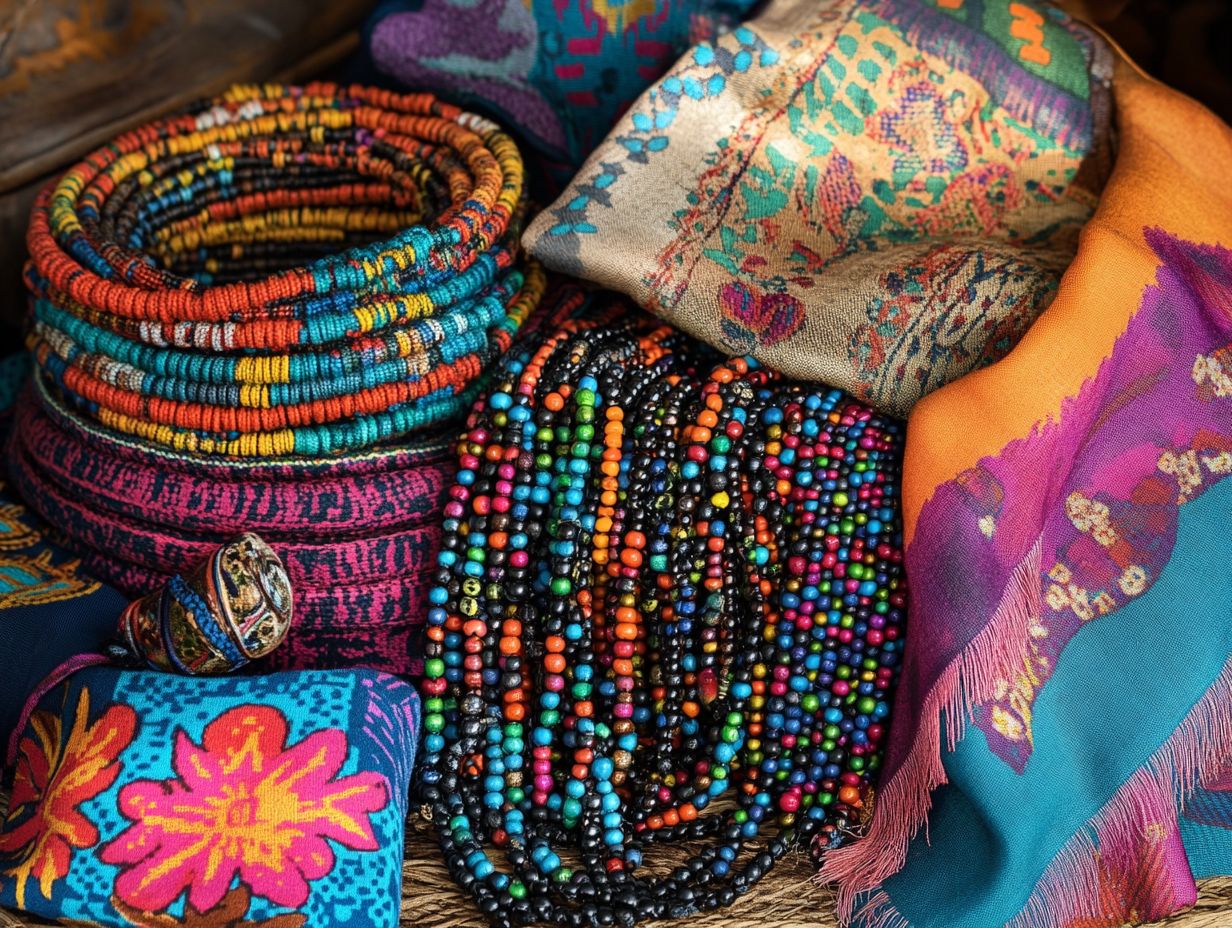
Finding inspiration for cultural accessories involves looking into various cultural niches. Understanding consumer preferences will help you tap into the rich diversity of global fashion.
By immersing yourself in historical references, you can appreciate the craftsmanship and significance behind traditional motifs. This sets the stage for modern adaptations.
As you explore the intricate layers of folk accessories from detailed beadwork to vibrant textiles you’ll discover opportunities to create pieces that resonate deeply with consumers.
Recognizing current market trends and consumer preferences is crucial for shaping designs that are not only visually striking but also culturally relevant.
This dynamic interplay between past and present ensures accessories remain both timeless and contemporary. Don t miss out on the chance to celebrate the rich stories behind these pieces. Act now and embrace this unique cultural journey!
Traditional vs. Modern Cultural Accessories
Traditional cultural accessories often highlight timeless techniques and exceptional craftsmanship. In contrast, modern counterparts skillfully adapt these elements for today s market, embodying cultural significance within a richly varied fashion landscape.
Exploring the Differences and Similarities
When you delve into the differentials and similarities between traditional and modern accessories, consider how each reflects cultural significance and handmade skills.
Take traditional jewelry, for example pieces like Indian Kundan and Afghan lapis lazuli showcase intricate designs, often handcrafted by skilled artisans who have inherited their techniques over generations. These adornments do more than just embellish; they encapsulate rich stories of heritage and identity.
On the flip side, modern accessories, such as minimalist Scandinavian designs or vibrant streetwear jewelry, reinterpret these cultural elements while embracing innovative materials and techniques. This evolution raises intriguing questions about authenticity and cultural appropriation. Are these contemporary interpretations honoring traditional craftsmanship, or do they risk diluting its significance in the quest for modern aesthetics?
Cultural Appropriation vs. Appreciation in Accessories
Understanding the difference between cultural appropriation and appreciation is crucial in the accessories market. This awareness guides you toward ethical, sustainable practices and nurtures genuine cultural expression.
Understanding the Difference and How to Avoid Harmful Practices

To avoid harmful cultural appropriation, prioritize cultural appreciation by supporting local artisans and committing to ethical, sustainable practices in your design process.
This approach encourages you to cultivate meaningful relationships with the communities from which you draw inspiration, creating an environment ripe for dialogue and collaboration. By actively engaging with these artisans, you ll gain invaluable insights into the cultural significance of the materials and techniques, ensuring that your final accessories tell authentic stories rather than simply serving as decorative items.
Implementing ethical practices throughout your design journey respects the original cultural context and enables local craftspeople, paving the way for economic growth and cultural preservation. Ultimately, this partnership enriches the fashion landscape, fostering a vibrant tapestry that values and honors the artistry of diverse cultures.
Tips for Creating and Wearing Cultural Accessories
Creating and wearing cultural accessories demands a thoughtful approach. It’s essential to represent and acknowledge the rich cultural identity they embody with the utmost respect.
Dos and Don’ts for Respectful and Authentic Representation
When considering the dos and don ts of cultural representation in accessories, it is key to prioritize authentic cultural expression while aligning with consumer preferences. This focus shows respect for the origins of these accessories and enhances the experience for those who wear them.
As a creator, actively engage with the communities inspired by these cultural elements, ensuring symbols and motifs are used accurately and respectfully. Conversely, as a wearer, it s vital to be aware of the stories and significance behind the accessories you choose, steering clear of any trivialization.
Such thoughtful practices elevate the value of cultural accessories and can shape consumer preferences, fostering a deeper appreciation for authentic craftsmanship and meaningful representation in a marketplace that increasingly values genuine connections.
Frequently Asked Questions
Discover the beauty of cultural accessories today!
What are some ways to incorporate cultural elements in accessories?

Incorporate cultural elements by using traditional patterns or designs. You can also explore how to use accessories for a personal touch by utilizing materials unique to a culture or drawing inspiration from traditional accessories with a modern twist.
Why is it important to incorporate cultural elements in accessories?
Incorporating cultural elements celebrates and preserves the heritage of diverse communities. This approach adds uniqueness and meaning to accessories, transforming them from mere fashion statements into stories of culture.
How can I research different cultures for my accessories?
Dive into books, explore online resources, and visit cultural museums or events to learn about traditional accessories. Always respect the culture and educate yourself on the significance of the elements you want to include.
What are some examples of cultural elements in accessories?
Consider using traditional fabrics, beads, symbols, colors, or designs. Cultures worldwide, from Native American to African to Asian, offer rich inspiration.
Can I mix and match cultural elements in my accessories?
Absolutely! Mixing different cultural elements creates a unique and eclectic look. Just ensure your combinations are culturally respectful and appropriate.
How can I respect cultures while incorporating their elements in my accessories?
Educate yourself on the significance of cultural elements before using them. Always give credit to the culture, avoid sacred items, and source elements ethically to benefit the communities involved.

